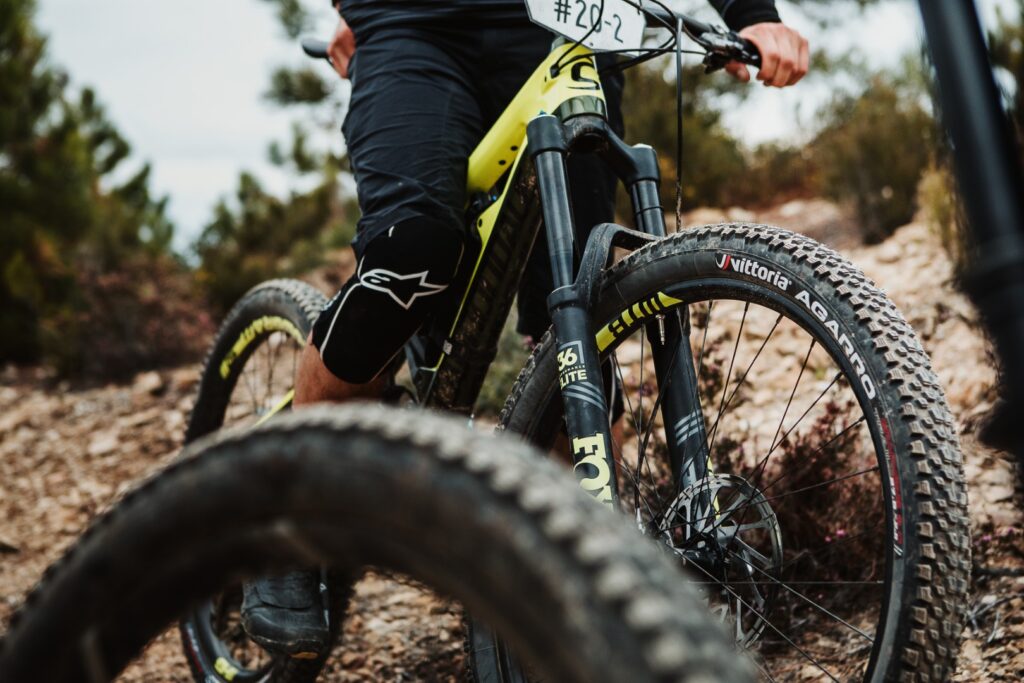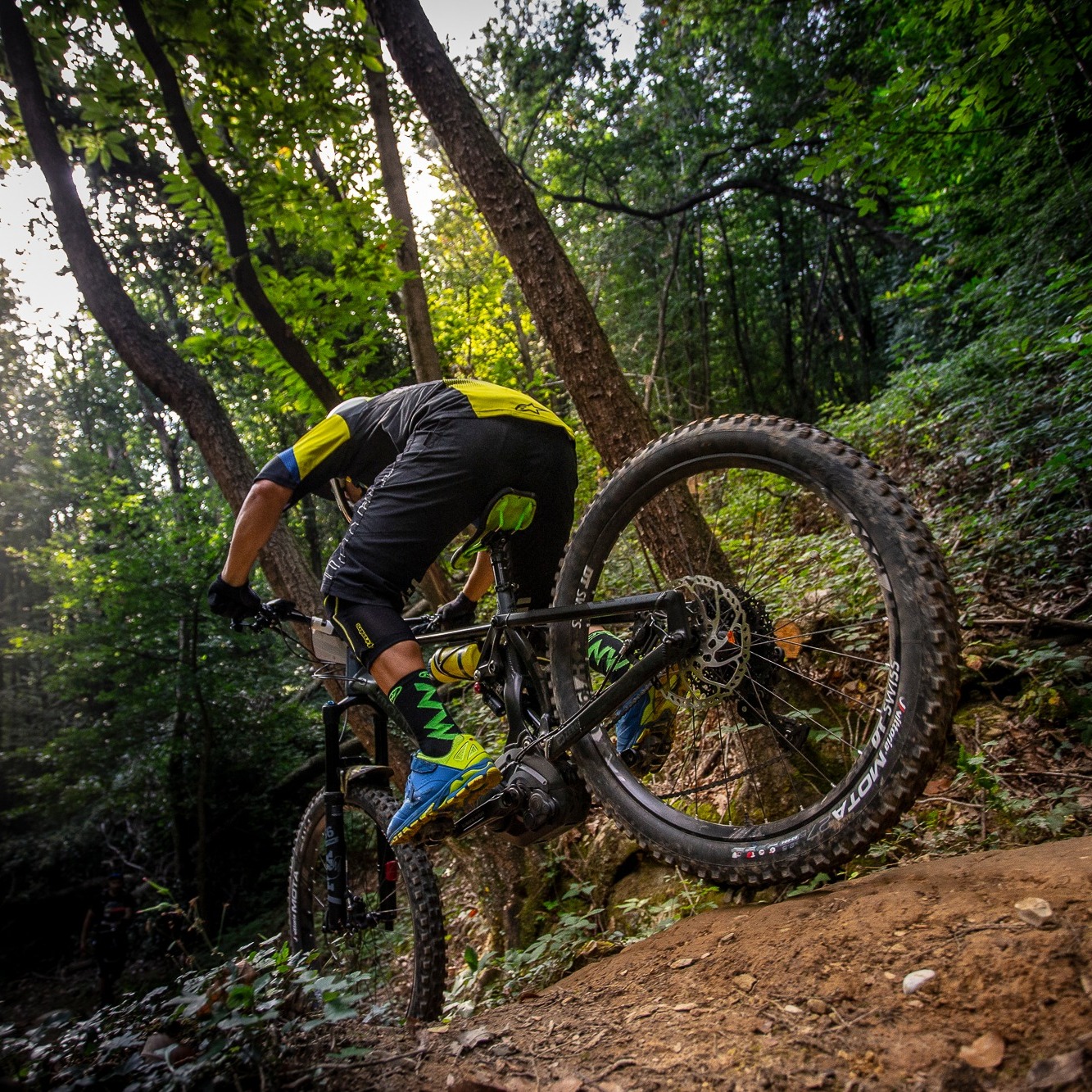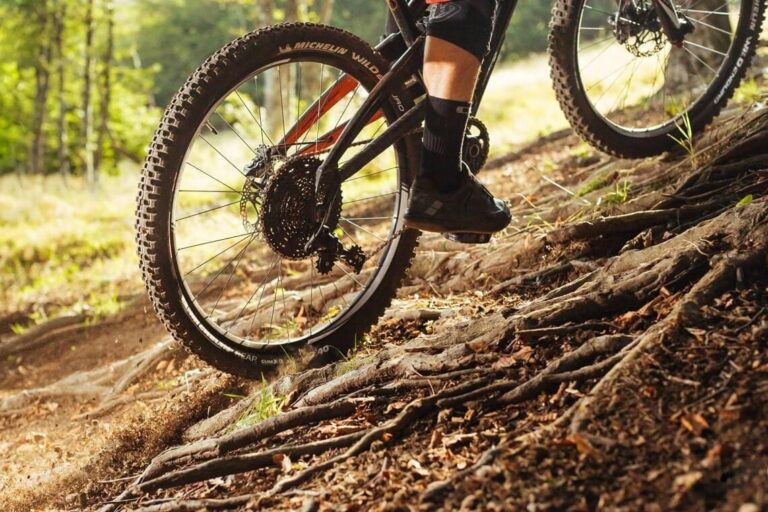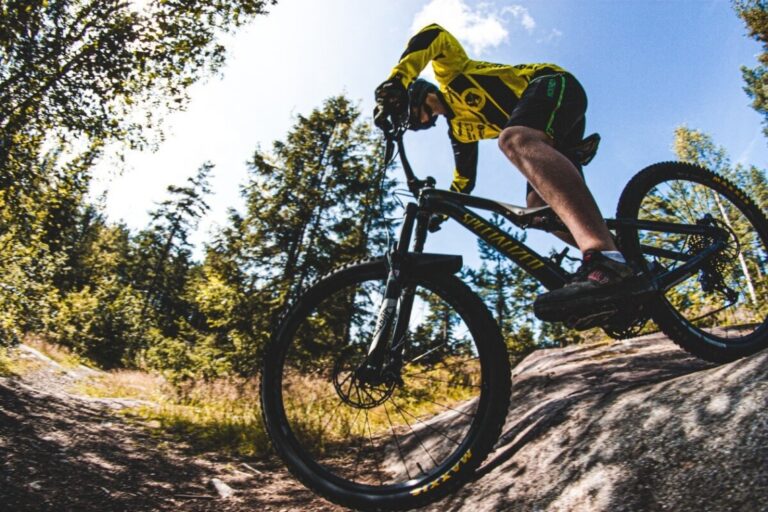Cutting Through the Air: Aerodynamics in Cross Country Bike Tires

Key Point Summary of Aerodynamics in Cross Country Bike Tires:
- Aerodynamic Considerations: While often overlooked in XC, aerodynamics, including tire selection, can affect speed and energy efficiency.
- Tire Width and Profile: Narrower tires with a lower profile can reduce air resistance, but trade-offs in grip and comfort may occur.
- Tread Pattern: The design of the tread pattern can influence aerodynamic drag, with smoother treads offering less resistance.
- Wind Resistance: Understanding how tire choice impacts wind resistance can lead to more informed decisions about tire setup for racing or training.
- Speed vs. Stability: Balancing the need for aerodynamic efficiency with the requirement for traction and stability on varied terrain.
Aerodynamics in cycling is often discussed in the context of road racing, time trials, and triathlons, where every fraction of a second shaved off can mean the difference between standing on the podium or not. However, the principles of aerodynamics also play a significant role in the world of cross country (XC) mountain biking.
As a seasoned cyclist with extensive experience across various disciplines, I’ve come to appreciate the nuanced impact that aerodynamic efficiency can have, even on the dirt trails and rugged terrains of XC courses. This article aims to explore aerodynamics in the context of cross country bike tires, offering insights into how wind resistance and tire design can influence speed and performance.
The Role of Aerodynamics in XC Tires
In the realm of cross country biking, where climbs are steep and the terrain can be unforgiving, the primary focus tends to be on weight savings and traction. However, aerodynamics also deserves consideration, especially in tire design and selection. The right tire can help minimize wind resistance, contributing to greater speed and reduced effort on flat sections and descents.

Tire Width and Profile
Traditionally, XC tires are narrower than their trail or downhill counterparts, aiming to strike a balance between reducing rolling resistance and maintaining adequate grip. From an aerodynamic perspective, a narrower tire cuts through the air more efficiently, potentially offering a slight advantage in terms of speed. However, it’s crucial to consider the terrain and conditions when choosing tire width, as too narrow a tire can compromise handling and comfort.
Tread Pattern
The tread pattern of a tire also factors into its aerodynamic properties. Tires designed for dry conditions often feature a lower, tightly spaced tread pattern, which can reduce air turbulence and drag. In contrast, tires for wet or muddy conditions have more aggressive, widely spaced treads, which, while excellent for grip, can increase wind resistance. The challenge lies in finding a tire that offers an optimal balance for the conditions you most frequently encounter.
Wind Resistance and Tire Design
Understanding the impact of tire design on wind resistance can be a game-changer, particularly in competitive XC racing. Tires with a smoother central tread and minimal side knobs may offer an aerodynamic advantage on hardpacked or smooth trails. However, the benefits of such a design must be weighed against the potential for reduced lateral grip in corners.

Speed vs. Stability
One of the perpetual challenges in selecting XC tires is balancing the quest for speed, including aerodynamic efficiency, with the need for stability and traction. Aerodynamically optimized tires may contribute to higher speeds on certain sections of a course, but without sufficient traction, those gains could be quickly negated by slower cornering speeds or the need for more cautious descending.
Final Thoughts
For beginner and mid-level cyclists venturing into the world of cross country biking, considering the aerodynamic aspects of tire selection may seem like a minor detail. However, as one progresses and starts to look for every possible advantage, understanding how tires can influence aerodynamic drag and wind resistance becomes an essential part of optimizing performance.
Whether training or racing, the choice of tires should reflect not only the demands of the terrain but also the subtle ways in which aerodynamics can impact speed and efficiency. By selecting the right tires, cyclists can enjoy a slight edge that, when combined with skill and conditioning, could make all the difference on the course.

For cross-country (XC) riding, where aerodynamics starts to play a role alongside rolling resistance and grip, the Schwalbe X-One Speed stands out as a tire that balances these needs effectively. While traditionally seen in cyclocross, its design principles lend well to XC riders looking for an aerodynamic advantage.
It features a relatively smooth tread pattern for reduced rolling resistance and aero drag on hardpack surfaces and has just enough knob structure to maintain grip in off-road conditions. Its volume and construction also contribute to lower wind resistance while still providing the necessary off-road performance. This makes the Schwalbe X-One Speed an excellent choice for XC riders aiming to optimize for speed, especially in dryer conditions where aerodynamic efficiency can complement traditional tire performance attributes.
FAQ
What pressure should cross country bike tires be?
The optimal tire pressure for cross country biking typically ranges between 20 to 30 PSI, depending on rider weight, tire width, and terrain conditions.
Do tires affect aerodynamics?
Yes, tires can affect a bike’s aerodynamics. The width, tread pattern, and shape of the tire can influence air resistance and thus impact overall aerodynamic efficiency.
At what speed does aerodynamics affect a bike?
Aerodynamic effects start to become significant at speeds as low as 15 mph (24 km/h) and become increasingly impactful as speed rises. At competitive cycling speeds, aerodynamics plays a crucial role in performance.
How can I make my road bike more aerodynamic?
To make a road bike more aerodynamic, consider upgrading to an aero frame and components (handlebars, wheels), using narrower tires, optimizing your riding position for a lower frontal area, and wearing tight-fitting cycling clothing.






